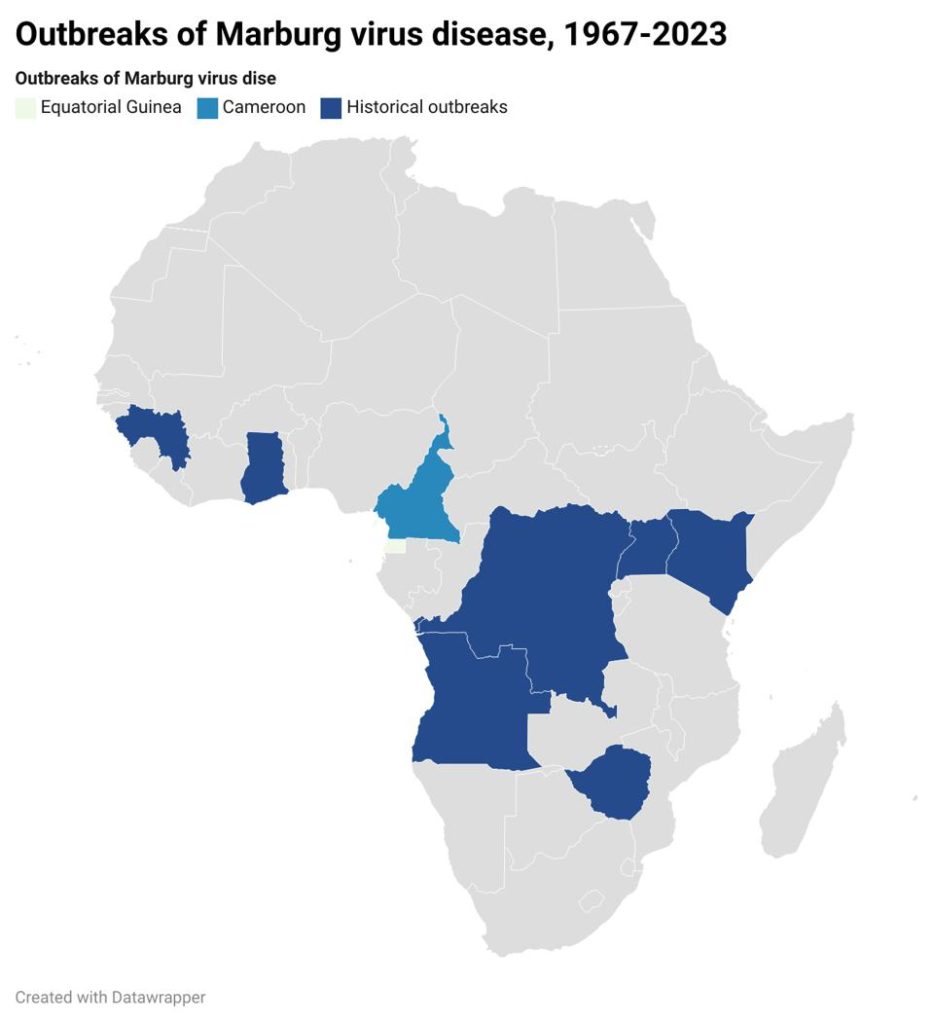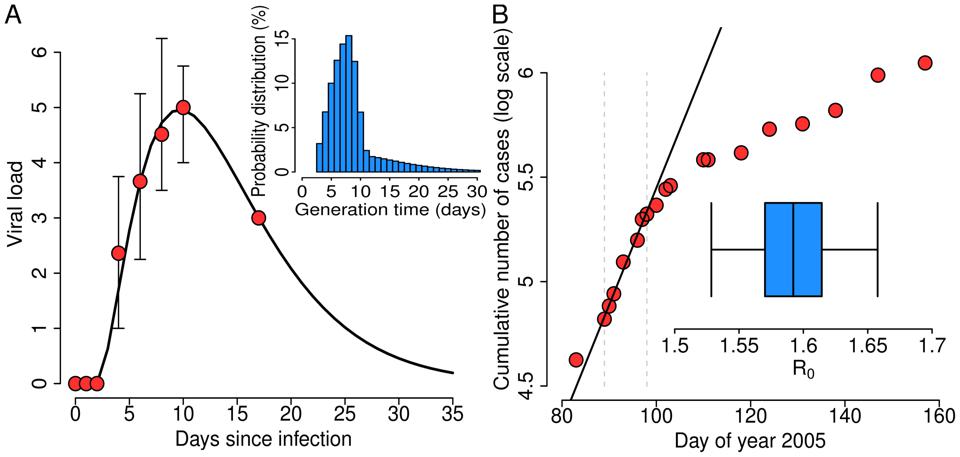In an outbreak that started on February 7, 2023, Equatorial Guinea has reported nine fatalities and sixteen suspected cases of the Marburg viral disease.
While Cameroon has reported two further suspected cases. Although the two probable cases were found in a region of Cameroon close to the presumed origin in Equatorial Guinea, it is concerning that neither case had a history of travel, indicating that undetected local transmission may be happening in both nations. Marburg Virus Disease
Also Read: As the rate of positive tests increases, the norovirus looks to be spreading.
Why Marburg is a concern?
Marburg virus is a deadly viral disease similar to Ebola. Thankfully, outbreaks are uncommon. There were only fifteen outbreaks between 1967 and 2022, according to the CDC. Only four of these outbreaks saw double-digit case counts, but two of them were relatively substantial (154 cases in the Democratic Republic of the Congo from 1998 to 2000 and 252 cases in Angola from 2004 to 2005), demonstrating the possibility of continued transmission.

Marburg is a filovirus, similar to Ebola. It is thought that the spread of the virus from fruit bats to humans is what triggers outbreaks. Following person-to-person transmission, contaminated body fluids are used.Angola, the Democratic Republic of the Congo, Ghana, Guinea, Kenya, Uganda, and Zimbabwe have all seen spillover incidents in the past, proving that Marburg is not a physically isolated city. It’s unclear why there haven’t been more outbreaks.

The most terrifying aspect of Marburg is how deadly it is: 379 of the 474 confirmed cases that were reported globally between 1967 and 2022 resulted in death. Accordingly, the raw case fatality rate is close to 80%.
The Marburg virus is not extremely contagious, contrary to popular assumption.
The Angolan outbreak in 2005 had a basic reproduction number (R0) of about 1.6, which is comparable to the seasonal influenza. Marburg is anticipated to have a generation time of nine days and a doubling time of roughly 12.4 days, which is substantially longer than, for example, COVID-19. Marburg infections can persist for a very long time, just like Ebola. The predicted time for peak infectiousness is 10 days following infection.

The Central African war against Marburg
- Equatorial Guinea isolated more than 200 people and limited movement last week in its Kie-Ntem region, where cases connected to a burial ceremony were originally discovered, in response to the current outbreak.
- Border restrictions and contact tracing, which have been effective at stopping the spread of Marburg and Ebola in earlier outbreaks and are compatible with modelled therapies for the disease, are being used by authorities in both nations to combat the outbreak.
- Despite the fact that there are no licensed Marburg vaccines, there are experimental versions. The World Health Organization held an emergency conference, and Helen Braswell reported that there were just a few hundred publicly accessible dosages left.
- Fortunately, Marburg outbreaks are uncommon. The current outbreak makes it possible to test those vaccinations in the field, but deployment would need to be quick and it is difficult to predict what distribution would be best given the tiny size of the outbreak.
- However, it appears that national and international specialists are taking the proper action—a controlled response intended for quick containment. There will probably be found to be more cases. However, given the focus and effort, it is unlikely that the virus would spread outside of the nations that are already infected.
Follow us on Twitter, Facebook and Instagram for more related News.






